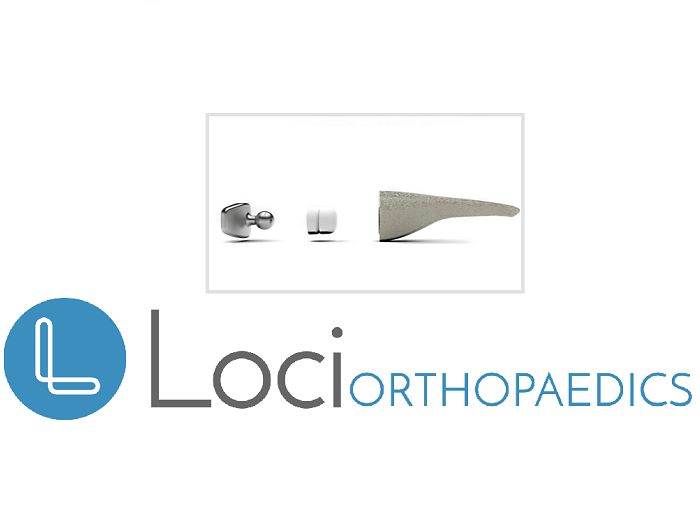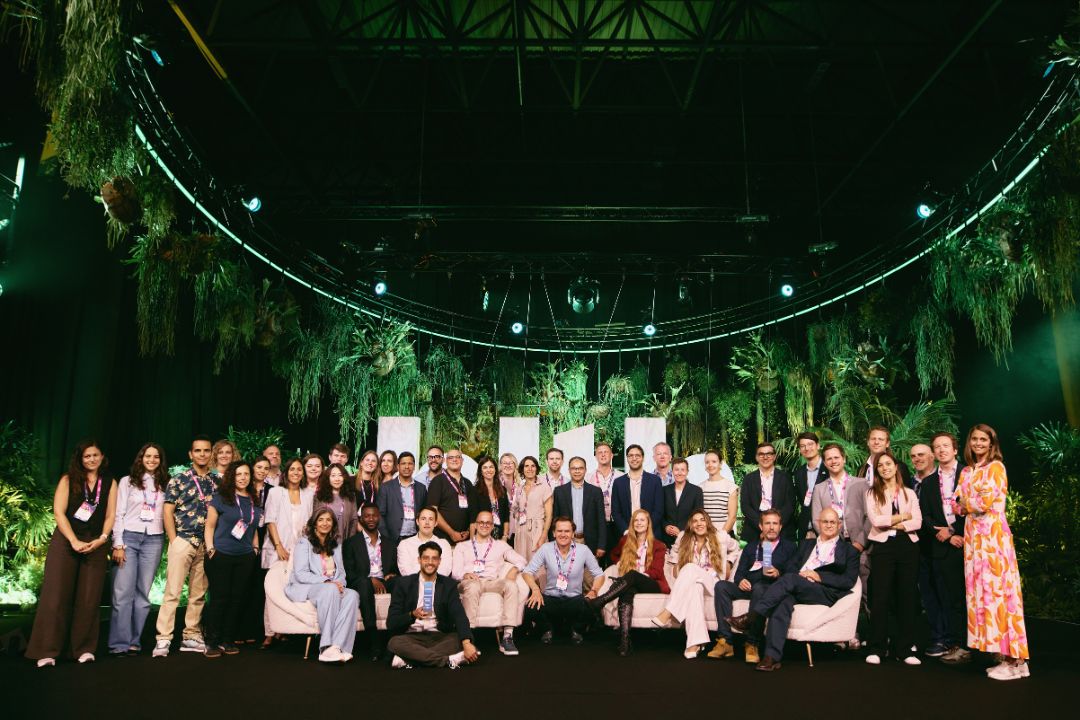20th August 2019
Bringing essential advances in surgical intervention for thumb-base arthritis one step closer to the market
In July 2018 Loci Orthopaedics closed a 2.75m Seed Investment Round, bringing essential advances in surgical intervention for thumb-base arthritis one step closer to the market.

Loci Orthopaedics’ innovation journey began when founders Brendan Boland and Gerry Clarke met during the BioInnovate Programme at NUI Galway, uniting Gerry’s 40 years of experience in MedTech, and Brendan’s clinical background. In keeping with BioInnovate’s Stanford-model of needs-led innovation, Loci Orthopaedics ethos is driven by a strong evidence base – both clinical and technical – for product development.
Their product design was inspired by a 2015 research paper co-written by key opinion leaders based at Stanford and Brown Universities which mapped the biomechanics of the joint; this mapping was a key development tool in Loci’s InDx Implant solution. According to Brendan: “We try to engineer to meet the natural biomechanics of the body as opposed to engineering around the natural biomechanics of the body.” The resulting InDx Implant is a truly stunning example of biomechanical design.
Having completed their BioInnovate year, Loci secured a €505 000 Commercialisation grant from Enterprise Ireland. In July 2017, Loci secured a €50 000 HeadStart Award, and though Brendan claims HeadStart had many influences on their success, the funding was used solely in product development. They spun out from NUI Galway in August 2017, secured bridging finance in September 2017, and closed their Seed investment round in June 2018. The €2.75million total does not include the HeadStart Award, or Brendan Boland’s €19 000 prize from the Ireland Best Young Entrepreneur award in January 2018.
Despite the demands of fundraising, clinical work has been continuing throughout this time. As Loci announced their successful Seed Funding round during the summer, all the ‘big ticket’ items in this young company’s development have been completed simultaneously: performance testing, preparation for clinical times and product development. According to Brendan, a company is only as good as their solution, and “without the technical and clinical outcomes people are only so interested”. A great story merely captures investors’ interest, so the project must be strong to secure investment.
The story, however, is fascinating. During the BioInnovate programme Boland and Clarke spent hundreds of hours in clinical immersion in Cork University Hospitals where they identified the need for surgical advances in treatment for thumb-base joint arthritis. Five per cent of the world population experience severe symptoms of thumb-base arthritis: around 40 million sufferers across Europe and the US. In keeping with the ageing population trends the need is set to increase dramatically in the next 15 years.
The thumb-base is essential to normal function. The thumb joint supplies 40-50% of function, and losing this function is equivalent to losing your middle, ring and pinky finger combined. Thumb-base arthritis makes it difficult to get dressed, or to open jars, medication bottles, even doors! It also makes it more difficult to grasp objects while falling, contributing to the damning falls statistic of which we are all too aware. Thumb-base arthritis is not just painful; it has a significant impact on normal life.
According to Boland, surgical interventions below the shoulder and below the knee are the fastest growing area of orthopaedics, and surgical interventions of the thumb are “the most common upper-limb surgery other than a broken bone.” This amounts to more than 200,000 surgical procedures in the EU and the US for severe thumb base arthritis, but this figure could be much higher.
In spite of this growing need, the current treatment has been in place since 1930s; was ‘perfected’ in the 1940s; and has been offered almost unchanged since the 1950s. Loci will steer this post-war surgical method into the present day with cutting-edge 3D designed technology, helping to close the gap between symptomatic patients and patients currently progressing to surgery.
To understand the degree to which this clinical need is under-addressed; though the condition affects patients to around the same degree as knee and hip joint pain, only about 10% of the patient population proceeds to surgery. The reasons are clear: the current surgical interventions are deeply insufficient.
One option, the Trapeziectomy, is associated with long recovery time and a loss of function. The other surgical option is an implant with a failure rate of up to 40%; according to Brendan this solution is “not actually designed to accommodate the joint.” Other stop-gaps exist: the patient can keep getting regular steroid injections into the thumb. In Brendan’s experience, faced with these options, “patients wait until the pain gets so bad that they’re prepared to accept risk of loss of function.”
Loci wants to disrupt the MedTech market from a surgical procedure that hasn’t changed since the 1950s, and with the InDx Implant and the body’s natural biomechanics make thumb surgery “as de-risked as hips.” The InDx Implant falls into the same categories as hip and knee interventions, and would be fully reimbursed as a joint implant provided by a public health system. In the case of private insurers, Loci’s offering is comparable to other joints in the market.
The costs are comparable to the current implant solution and will be marketed at a similar price point, however, the significant leap in success rates make the InDx Implant much more attractive to both patients and surgeons. The recovery period from a Trapiezectomy is around eight months, with a significant loss of function. Loci wants to get patients back to life, and back to work, faster – in just eight weeks.
The good news is, thanks to the tireless efforts of Boland and Clarke, Loci’s solution is not too far off. Their plan is to seek FDA approval, with a limited release in around 28-30 months, and to access the EU market around six months later. In the meantime, the goal is to de-risk the procedure in the minds of surgeons, and Loci hopes to leverage the EIT Health network to achieve that goal. They have been working with Key Opinion Leaders at KU Leuven, and are seeking market access across Europe via insurance companies, large hospital systems and regional payers, focusing first on Belgium/Netherlands, Germany, and France.
This dedicated team remains based in Galway, Ireland and it is a truly local affair. Brendan explains, “everything is manufactured in Ireland. The device is fabricated here in Galway, a special finish must be applied in Waterford, the tooling is made in Galway and Waterford, and the sterilization and packaging performed in Tullamore. It is all sub-contracted locally. Our engineering drawing services are provided by another NUI Galway development company!” The only thing they outsource is performance testing, which they do so in Germany.
For now, Loci have added a graduate engineer to their team – Fiona Mangan, who graduated top of her class in Biomedical Engineering at NUI Galway. Over the next three years they will grow their team as the recruit staff to navigate regulatory affairs, quality affairs and supply chain management, as well as a sales and marketing team in the US and Europe. They are looking ahead: engineering, QA and RA will begin work on the InDx Implant 2.0, and when that need is addressed they will look at concepts for other joints.
When asked what he gained from his experience in the HeadStart Finals, Brendan pointed out that the kinds of companies who compete and excel in this space are “highly investible”, and must utilise the process and network in innovative ways. “[There are] hundreds of eyes on these companies, between EIT Health, Enterprise Ireland, Bioinnovate, BioExel, the investors,” he says, listing the many contributors to Loci’s own development. “You get a lot of people looking at you, asking questions, and pointing things out. You are constantly challenged, and must have an answer for all of these things.”
The HeadStart funding also helped improve their investment proposition, demonstrating progress even as the round was closing. Investors were reassured by the additional funds raised and the constant product development, which really demonstrates the dedication of the team. According to Brendan, HeadStart “helped us to continue to develop and de-risk the product, giving more reassurance to investors.”
Europe's top health start-ups take centre stage: EIT Health Catapult winners are revealed at HLTH Europe

2025 Catapult programme winners announced.
Finding Europe’s next healthtech leaders: Insights from Antoine D’Hollander

Insights from Antoine D’Hollander, Capricorn Partners.
EIT Health supports 17 promising deep tech start-ups bridge the ‘Valley of Death’

Providing start-ups with the right support.